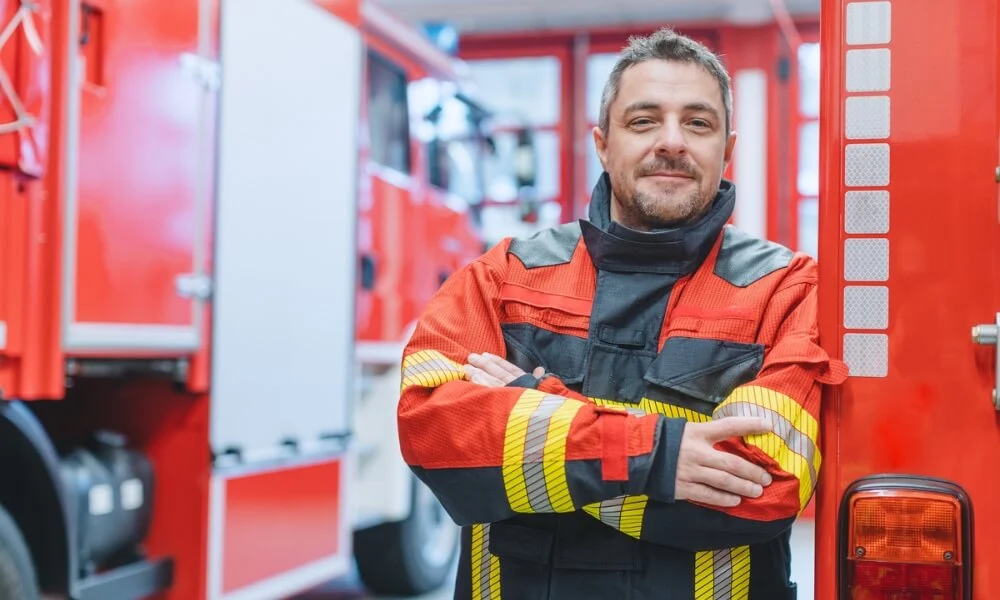Fire Wardens play an integral role in ensuring the safety of everyone within an organization. Tasked with not only being a champion of prevention but also a coordinator in times of emergency, the breadth and depth of their responsibilities cannot be overstated. This comprehensive guide will dissect what a Fire Warden truly is and unpack the 25 key roles and responsibilities they shoulder to foster a secure and well-prepared workplace.
We will journey through the labyrinth of everyday and emergency duties, showcasing the invaluable skills a Fire Warden must master. Their importance will be highlighted from a legal and human perspective, showing the crucial role they play in saving lives and property.
This article is essential for anyone involved in fire safety, whether they current Fire Wardens, those considering the role, or employers aiming to enhance their fire safety practices. Let’s dive in and illuminate the all-encompassing world of a Fire Warden.
What’s Fire Warden?
A Fire Warden, also known as a Fire Marshal, is an individual appointed within an organization or business to play a key role in the company’s fire safety plan. They are responsible for managing fire risk, fire safety, and evacuation procedures in the event of a fire.
Fire Wardens help prevent fires by monitoring and managing potential fire hazards and risks within the workplace and raising awareness about fire safety among other staff members. They are trained to understand fire safety regulations, how to operate fire safety equipment, and how to act swiftly and appropriately should a fire break out.
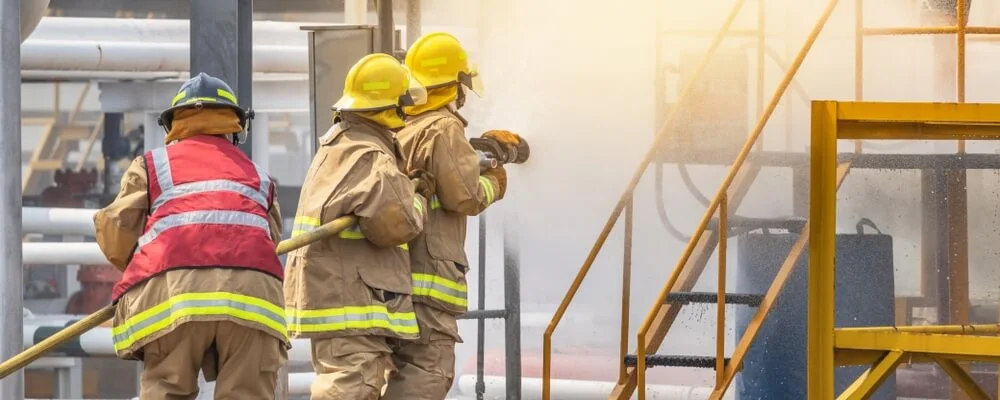
25 Key Fire Wardens Roles & Responsibilities
Fire wardens play a significant role in ensuring workplace safety, and they have a diverse range of responsibilities. In addition to the ones I previously mentioned, here are more roles and responsibilities for a fire warden:
1. Fire Risk Assessments
Fire wardens play a crucial role in conducting regular fire risk assessments. These assessments involve inspecting the work premises to identify potential fire hazards or risks. This process includes assessing the potential ignition sources, the various combustible materials, and the effectiveness of the existing control measures. The fire warden then documents the risks and recommends necessary actions. The fire risk assessment is not a one-time activity; it should be done periodically and whenever significant changes are made to the workplace.
2. Risk Management
Once the fire risk assessment is completed, the fire warden should help implement the necessary measures to manage and reduce the identified risks. This can involve a variety of actions depending on the specific hazards identified. For example, it might mean ensuring the correct storage and handling of flammable substances, improving housekeeping procedures, ensuring electrical safety, maintaining clear escape routes, or improving training and awareness among staff. The warden is crucial in coordinating these efforts and monitoring their effectiveness.
3. Fire Safety Checks
Regular fire safety checks are important to a fire warden’s responsibilities. This involves routinely checking all fire safety equipment, including fire alarms, fire extinguishers, fire blankets, sprinkler systems, and emergency lighting, to ensure they are in proper working condition. Fire wardens should also ensure that escape routes are clear and accessible, fire doors are operational, and fire safety signage is visible and accurate. These checks help ensure that all safety systems are ready to function as intended in the event of a fire.
4. Equipment Maintenance
Fire safety equipment requires regular maintenance to remain effective. Fire wardens oversee fire safety equipment maintenance schedules as part of their role. This includes arranging regular professional servicing of equipment such as fire extinguishers, fire alarms, and sprinkler systems and ensuring these devices are correctly installed, readily accessible, and clearly marked. Keeping accurate and up-to-date records of maintenance activities is also a key responsibility, helping to ensure compliance with fire safety regulations and demonstrating due diligence in the event of any fire safety inspections or investigations.
5. Emergency Exits
One of the main responsibilities of a fire warden involves regularly inspecting emergency exits and escape routes. This ensures that they remain unobstructed and easily accessible at all times. This is crucial for a safe and swift evacuation from a fire. It’s important for the fire warden to familiarize themselves with all possible escape routes and to maintain signage indicating exits. Also, any issues, such as blocked or locked exits, should be reported and resolved immediately.
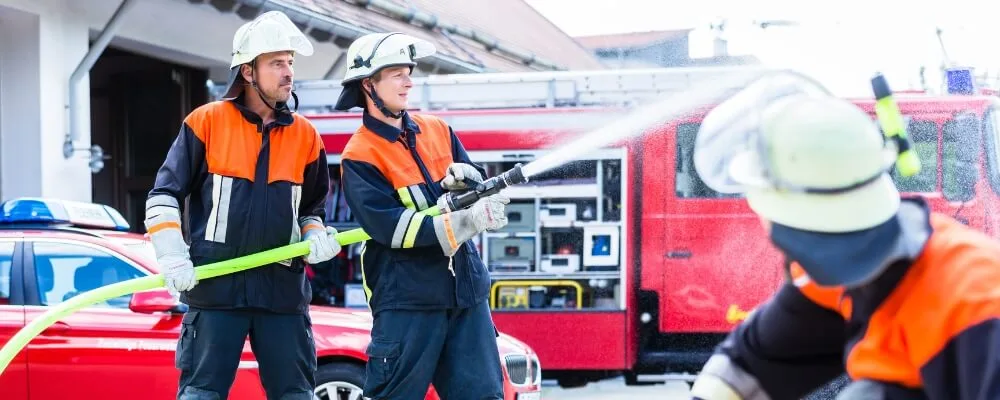
6. Fire Doors
Fire doors are essential in preventing the spread of fire and smoke, essentially compartmentalizing a building to slow down a fire’s progression. A fire warden needs to regularly check the functionality of fire doors, ensuring they close correctly and have appropriate seals, and are not wedged open or tampered with. It’s also important to ensure that everyone understands these doors’ purpose and refrain from propping them open, which would negate their protective function.
7. Fire Drills
Fire wardens are responsible for arranging and leading regular fire drills. These exercises simulate the conditions of a real fire, helping to ensure that everyone knows exactly what to do if a fire occurs. Drills provide a practical demonstration of evacuation routes, assembly points, and other emergency procedures, helping to identify any potential issues or improvements that could be made. Fire wardens should review the results of each drill, addressing any problems and making changes as necessary to ensure a smooth evacuation in a real emergency.
8. Staff Training
It’s the fire warden’s responsibility to make sure all staff members are aware of the fire safety measures in place and are trained to respond in the event of a fire. This involves training staff on evacuation procedures, firefighting equipment like fire extinguishers, and raising the alarm. The fire warden may also instruct on minimizing fire risk in daily work activities. This training should be provided to new staff and refreshed regularly for all staff to ensure it remains fresh in their minds.
9. Fire Safety Policy
A fire safety policy is a document outlining a company’s commitment to fire safety, its fire prevention measures, and actions to be taken during a fire. It’s a key document that forms the foundation of a company’s fire safety strategy. A fire warden plays a critical role in developing and implementing this policy. They work closely with management and other relevant parties to develop the policy, ensuring it complies with current legislation and best practices and is applicable and effective for the specific workplace. The fire warden also helps enforce the policy and ensures all employees know it.
10. Record Keeping
The fire warden is responsible for keeping comprehensive and accurate records of all fire safety measures, risk assessments, fire drills, and training sessions. These records are important because they show that the company meets its legal fire safety obligations. They can also help identify patterns or recurrent issues requiring attention. Record keeping should include dates, findings, actions taken, people involved, and follow-up activities.
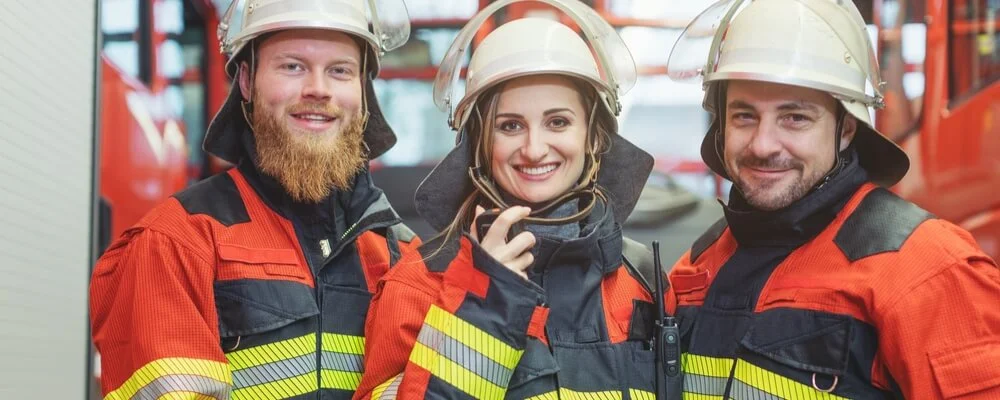
11. Reporting
A key duty of the fire warden involves promptly reporting any identified fire risks or issues to management or the relevant authority within the organization. This could include faulty equipment, blocked fire exits, improper storage of flammable materials, or breaches of fire safety regulations. Timely reporting allows issues to be addressed quickly, helping maintain a safe working environment.
12. Emergency Plan
The fire warden should create and maintain an up-to-date emergency evacuation plan. This plan should include clear instructions on what to do in case of a fire, including designated escape routes, assembly points, and procedures for alerting emergency services. It should consider the specific layout and features of the workplace, as well as the nature of the work, carried out. The plan should be reviewed and updated regularly, especially after any significant changes to the workplace, fire safety legislation, or following fire drills that highlight areas for improvement. The fire warden should ensure all employees know this plan and what to do in an emergency.
13. Fire Prevention
One of the primary responsibilities of a fire warden is to promote fire prevention measures among staff. This entails educating employees about potential fire hazards in the workplace and how to avoid them. This could include avoiding the improper storage of flammable materials, not overloading electrical sockets, keeping escape routes clear, and safely disposing of waste material. It’s also about fostering a culture of safety where everyone is aware of the importance of fire prevention and is proactive in mitigating risks.
14. Regulation Compliance
A fire warden ensures the workplace complies with all local fire safety regulations and standards. These can include rules about fire safety equipment, escape routes, fire drills, employee training, and risk assessments. The fire warden must be familiar with these regulations and regularly check that they are being adhered to. This role also involves staying up-to-date with any changes to the regulations and ensuring these are incorporated into the workplace’s fire safety strategy.
15. Awareness Programs
Organizing fire safety awareness programs is another key responsibility of a fire warden. These programs can help to increase employees’ understanding of fire risks and how to respond in the event of a fire. The programs might include presentations, workshops, or training sessions and could cover topics such as how to use fire extinguishers, the importance of keeping fire doors closed, what to do if you discover a fire, and the steps to take during an evacuation. These programs aim not only to equip staff with the knowledge to react appropriately during a fire, but also to help prevent fires from occurring in the first place.
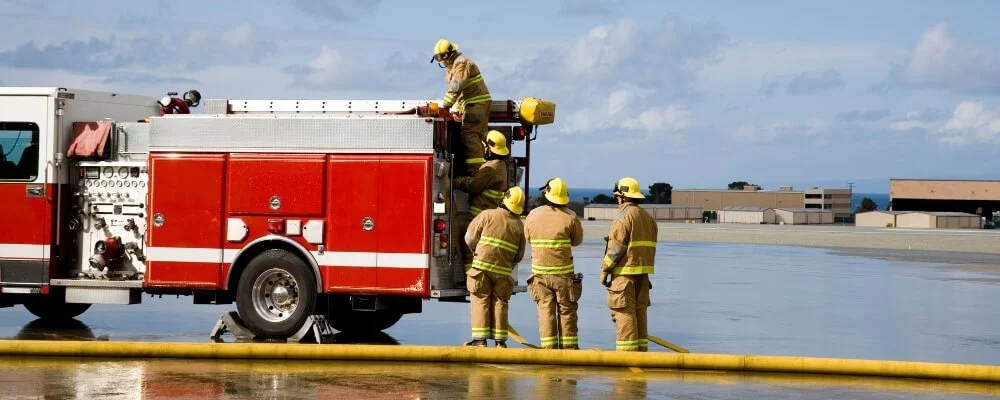
Additional Roles and Responsibilities Of Fire Wardens
- Emergency Response: In a fire or other emergency, the fire warden leads and coordinates the evacuation process. This involves guiding employees to the designated escape routes, ensuring everyone evacuates calmly and orderly, and that nobody is left behind.
- Communication with Authorities: The fire warden should be able to communicate effectively with emergency services, such as the fire department. They should be able to provide important information about the situation, including the location and nature of the fire, if anyone is trapped or injured, and the presence of any hazardous materials.
- Account for Personnel: After an evacuation, the fire warden must ensure all personnel are accounted for. This typically involves performing a headcount at the assembly point and working with supervisors or managers to identify if anyone is missing.
- First Aid: If trained, a fire warden may be required to provide first aid assistance. This could involve treating minor injuries, supporting people in shock, or providing initial care until medical professionals arrive.
- Hazardous Materials: A fire warden should understand the risks associated with hazardous materials in the workplace. This includes knowing how to store them safely to reduce the risk of a fire and the specific dangers they can present in a fire, such as toxic fumes or explosions.
- Post-Evacuation Management: After an evacuation, the fire warden’s job is to ensure nobody re-enters the building until it is declared safe by the appropriate authorities.
- Review Safety Measures: Fire safety is a dynamic process, and it’s important for fire wardens to regularly review fire safety measures and procedures. This can involve identifying areas for improvement, adapting plans as the workplace changes, and staying updated on the latest best practices in fire safety.
- Assist Vulnerable Individuals: Some individuals may need extra assistance during an evacuation, such as disabled staff members, visitors, or contractors. The fire warden should be aware of these individuals and have a plan to ensure they can evacuate safely.
- Alarm Testing: Regular testing of fire alarms is essential to ensure they function correctly and can be heard throughout the building. The fire warden is often responsible for arranging these tests and addressing any issues identified.
- Feedback and Improvements: After fire drills or real evacuations, the fire warden should gather feedback from staff. This can help identify any issues or concerns, such as areas of confusion or bottlenecks in escape routes. The warden can then use this feedback to improve evacuation plans and procedures.
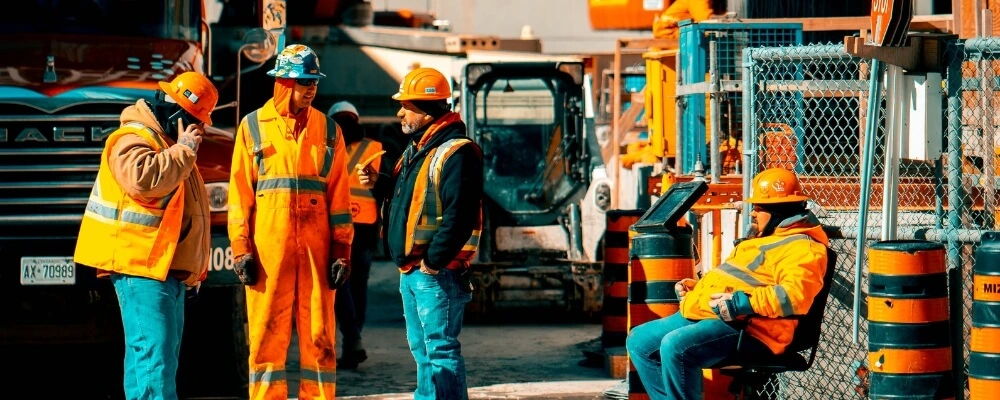
Difference Between a Fire Marshal and a Fire Warden
In the context of workplace fire safety, the terms “fire marshal” and “fire warden” are often used interchangeably. Both roles involve overseeing fire safety measures, ensuring compliance with fire safety regulations, and leading evacuations during a fire. They are tasked with maintaining a safe environment and minimizing fire risks in the workplace.
However, some organizations choose to differentiate between these two roles, assigning them slightly different responsibilities.
- A fire marshal is often responsible for more strategic duties such as performing risk assessments, checking and maintaining fire safety equipment, creating and implementing fire safety policies, and liaising with local fire and rescue services.
- On the other hand, a fire warden usually has more operational duties, such as leading fire drills, training staff in fire safety procedures, checking escape routes, and overseeing evacuations during a fire incident. They are often the first point of contact in a fire emergency and play a critical role in ensuring everyone evacuates safely.
In summary, the key difference between a fire marshal and a fire warden often lies like their responsibilities – strategic versus operational – but this can vary depending on the organization. It’s also not unusual for the same person to perform both roles, especially in smaller organizations. Regardless of the terminology, the most important aspect is that workplace fire safety duties are adequately covered.
Legal Requirement for Having Fire Wardens
The legal requirement for having fire wardens in the United Kingdom is detailed in the Regulatory Reform (Fire Safety) Order 2005. This law applies to all non-domestic premises in England and Wales, including the common areas of multi-occupied residential buildings.
The Order places the fire safety duty on the ‘responsible person’, usually the employer, owner, landlord, or occupier. This person is legally required to ensure the premises are safe from fire risk. Section 13 of the Order specifically states that the responsible person must appoint one or more competent persons to assist in undertaking necessary preventive and protective measures. These competent persons are often referred to as fire wardens or fire marshals.
The Order does not specify a specific ratio of fire wardens to employees or building occupants. However, it does state that the number of competent persons appointed must be adequate and appropriate, considering factors such as the size of the premises, the number of occupants, and the nature of the activities conducted on the premises.
The appointed fire wardens must be trained in fire safety and prevention, and their role is to manage fire risks, maintain fire safety equipment, train other staff, and lead evacuations in the event of a fire. To summarize, the UK’s legal requirement for fire wardens is detailed in the Regulatory Reform (Fire Safety) Order 2005, and it is a vital aspect of maintaining fire safety in all non-domestic premises.

How Many Fire Wardens Should a Business Have?
The number of fire wardens a business should have depends on various factors. These factors include:
- Size of the Workplace: Larger workplaces, such as multi-story buildings or sprawling factories, will require more fire wardens to cover all areas.
- Number of Employees: The more employees a workplace has, the more fire wardens it will likely need.
- Risk Level: Workplaces with higher fire risk, such as those dealing with flammable materials, will need more fire wardens.
- Building Layout: Complex layouts may require more fire wardens to ensure all areas can be evacuated quickly and safely.
- Working Shifts: If your business operates in shifts, you may need more fire wardens to cover all working hours.
- Vulnerable Individuals: If you have a significant number of vulnerable individuals (e.g., disabled or elderly employees), you may require additional fire wardens to assist in the event of an evacuation.
No specific numbers are outlined in legislation, so you’ll need to use your judgment and possibly seek expert advice to decide on the appropriate number of fire wardens. It’s also important to have some redundancy in your system if a fire warden is absent or unavailable during an emergency.
Lastly, remember that training more staff in fire safety can enhance your workplace’s overall level of preparedness and ensure a rapid, organized response in case of a fire.
Conclusion
To conclude, the role of a Fire Warden is pivotal to workplace safety, going beyond just fire prevention and extinguishing. It encompasses many responsibilities, including risk assessment, management, training, and communication. Fire Wardens are invaluable assets in every organization, providing the necessary safeguarding measures and quick response to emergencies. As we’ve navigated through the 25 key roles and responsibilities, it’s evident that their role is as comprehensive as it is crucial, ensuring that businesses not only comply with legal requirements but, more importantly, maintain a safe environment for all their employees.

